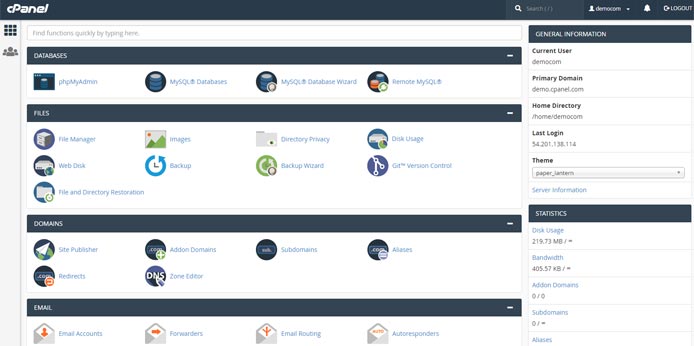
In the world of websites and hosting providers the arguments may not end, but we can bring you an unbiased Plesk control panel vs cPanel comparison that can end the argument. Discover more information on how Plesk integrates with our servers.People usually argue that Plesk vs cPanel which is better? When you buy a Dedicated Server or Cloud Server from Fasthosts, you can choose to add the Plesk control panel to the package for just £9.99 per month, giving you a great set of features from the get-go. While the features in each panel are fairly similar, you’ll probably prefer the feel and experience of using one over the other. Your decision could be based on which web hosting control panel is available to your operating system, but it will most likely come down to which web panel you find easier to use. However, you will need to buy separate Plesk licences depending on which operating system you intend to run it on. Which web hosting control panel you choose will often depend on which operating system you’re running on your server.
#Plesk vs cpanel windows
On the other hand, the Plesk panel is available on 14 Linux distributions including CentOS, Ubuntu and Debian, as well as being available on Windows servers. The Linux distributions that support cPanel are CentOS, CloudLinux and RedHat Enterprise. cPanel is only available on Linux operating systems (although some backdoor methods are available to run cPanel on Windows servers). One major difference between the Plesk and cPanel web hosting control panels is that Plesk is available on both Windows Server and Linux distributions. Although the features are different, Plesk and cPanel both come with numerous security tools. Plesk vs cPanel: Securityīoth the Plesk panel and cPanel are heavily focused on security.


There are workarounds to get Docker and Git running with cPanel, but they’re much more complex than with Plesk. Plesk is also compatible with Git through the Gitman extension. Plesk has support for Docker on Linux, with a catalogue of over 200,000 Docker images that can be launched from within the Plesk web hosting control panel. Although it is possible to add extra apps to cPanel, the Plesk panel comes with support for more useful apps and extensions. Both can be used to configure DNS settings, manage email accounts, run FTP (File Transfer Protocol) and manage databases.

Out of the box, Plesk and cPanel both provide users with the same primary features for server and account management. By focusing on reducing the amount of memory required, cPanel developers were able to speed up the page-load times, as well as achieve faster account creation and other server management tasks. cPanel is the web hosting control panel that has really focused on optimising the performance. Generally, cPanel loads faster than a Plesk server. cPanel does allow for customisation of the home screen to make it a bit easier to find things, and the visibility of all features in one place can make it easier to find a function for the first time.ĬLI (command line interface) access is available for both, should the user prefer it to a GUI. The cPanel interface, however, does not group the features and tools as helpfully, and is often seen as being more cluttered. When clicked these expand to show further options. The Plesk panel is more streamlined and has features grouped in a list down the left-hand side. Of the two web hosting control panels, Plesk is widely considered to have a cleaner graphical user interface (GUI), and is a bit easier to use.

But for the rest of this blog, for the sake of simplicity, we’ll just call the package ‘cPanel’. Modern versions of cPanel are actually a combination of cPanel and WHM (Web Host Manager) interfaces, where the former is for customer account management and the latter is for server administration. But with the rise of other interfaces, it's often considered by many to be a Plesk alternative. Released in 1996, cPanel is the original contender, and as such has a high number of legacy users. Its newest version, Plesk Obsidian, boasts a number of UI and functionality upgrades. Plesk is a web hosting control panel and has been around since 2001, with the current stable release being Plesk Onyx – see our review of Plesk Onyx. Between them, they dominate the market for users looking for account and server management tools. When choosing between web hosting control panels, it's often a toss-up between Plesk or cPanel.


 0 kommentar(er)
0 kommentar(er)
